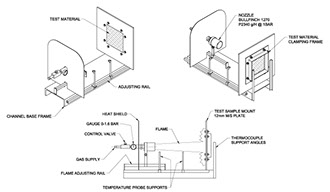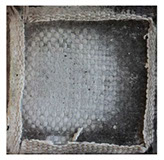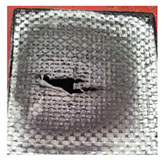Higher Temperature
Applications
In environments where escape from fire becomes difficult, and when fire can be produced by the burning of hydrocarbon fuels, the standards for acceptable fire behavior of materials become ever more stringent.
Regina developed a test rig for comparing burn behavior of different formulations, based on work done by Prof. Geoff Gibson, Professor of Composite Materials Engineering at the University of Newcastle upon Tyne.

A designer must consider comparing a composite surface after testing in our test rig for 60 minutes at a surface temperature of 1100°C, with a similar composite surface including FireShield® illustrates the retention of surface structural integrity provided by the FireShield®.

(a.) protected fibreglass

(b.) unprotected fibreglass
A designer must consider initial cost, weight and strength, especially in air, sea and land vehicles, where extra weight increases operating cost over the life of the vehicle, and can add to the cost of the infrastructures required.
The use of FireShield® as part of a composite surface layer for multi-material panels, both structural and non-structural, can provide two critical properties under these conditions:
• Structural integrity of the surface underneath
• Self Extinguishing
For more information please see our website on a tablet or desktop.
